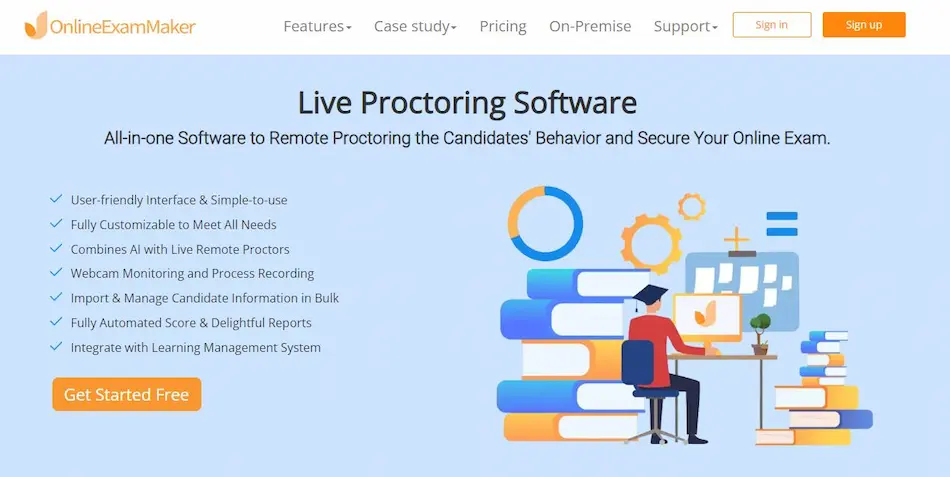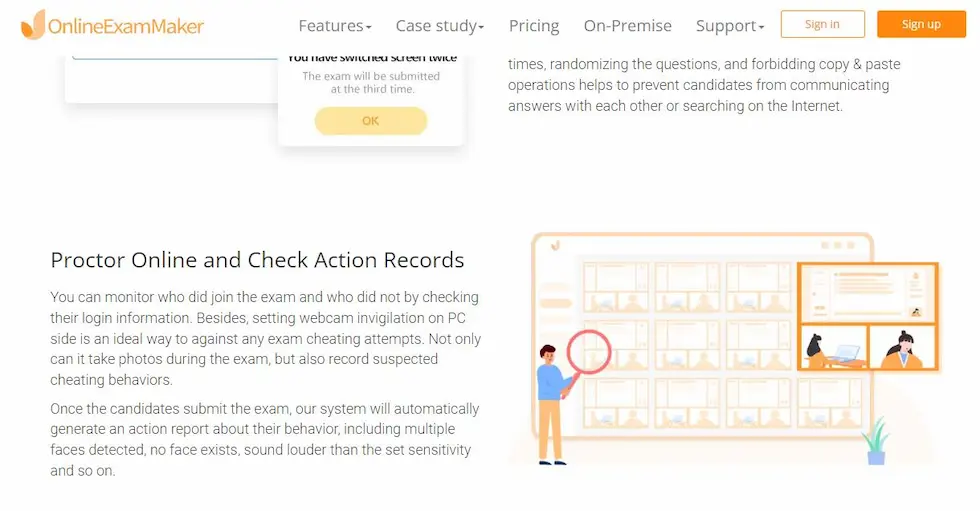In the digital age, education has undergone a profound transformation. The traditional classroom, with rows of desks and a teacher at the front, has given way to virtual education platforms that connect learners and instructors from around the world. While online learning offers incredible opportunities for flexibility and accessibility, it also presents unique challenges, particularly in maintaining academic integrity. To address these challenges, proctoring software has emerged as a valuable tool. In this article, we will explore the rise and role of proctoring software in virtual education, examining its benefits, ethical concerns, technological advancements, and best practices for implementation.
Understanding Proctoring Software
Proctoring software, at its core, is a set of tools and technologies designed to monitor and maintain the integrity of online assessments. It comes in various forms, including automated, live, and recorded proctoring methods. Automated proctoring relies on algorithms to detect unusual behavior during an exam, such as excessive eye movement or background noise. Live proctoring involves a human proctor monitoring students in real-time via webcam, while recorded proctoring records the entire exam for later review.
The primary purpose of proctoring software is to prevent cheating and plagiarism in online assessments, ensuring that students’ work accurately reflects their own knowledge and abilities. Proctoring software also plays a role in creating a fair and equitable learning environment for all students, regardless of their physical location.
Just so you know
With OnlineExamMaker quiz software, anyone can create & share professional online assessments easily.
The Proliferation of Online Learning
Online learning has seen exponential growth in recent years. Even before the COVID-19 pandemic, virtual education platforms were on the rise, offering a wide range of courses and degrees across various disciplines. However, the pandemic accelerated this shift, with educational institutions worldwide pivoting to remote learning to ensure continuity of education. This rapid growth in online learning has brought a diverse group of learners into virtual classrooms, each with their unique needs and challenges.
The Role of Proctoring Software in Academic Integrity

The surge in online education has underscored the critical importance of maintaining academic integrity. Proctoring software has emerged as a vital tool in this regard. It serves several key roles:
1. Prevention of Cheating and Plagiarism: Proctoring software helps prevent students from using unauthorized resources during exams, such as textbooks or websites. It also detects and flags instances of plagiarism by comparing students’ answers to a vast database of academic sources.
2. Detection and Deterrence of Academic Misconduct: By monitoring students during exams, proctoring software can detect suspicious behavior and deter students from attempting to cheat. The presence of proctoring can act as a powerful deterrent.
3. Promoting a Fair and Equitable Learning Environment: Proctoring software ensures that all students are held to the same standards of academic integrity, regardless of whether they are taking an exam in a physical classroom or from the comfort of their homes.
4. Student and Educator Perspectives: The use of proctoring software has sparked debates among students and educators. Some see it as a necessary tool to maintain fairness, while others express concerns about privacy and the potential for bias in proctoring algorithms.
Ethical and Privacy Concerns
While proctoring software offers valuable benefits, it also raises ethical and privacy concerns. Striking a balance between security and privacy is essential. Some key concerns include:
1. Data Collection and Student Consent: Proctoring software collects a significant amount of data, including video and audio recordings of students during exams. Institutions must obtain informed consent from students and be transparent about how this data is used and stored.
2. Potential Biases in Proctoring Algorithms: Proctoring algorithms can sometimes exhibit bias, leading to false positives or negatives. Institutions must work to mitigate these biases and ensure fair treatment for all students.
3. Addressing the Digital Divide and Accessibility Issues: Not all students have access to the necessary technology or a stable internet connection for proctoring. Educational institutions must consider the digital divide and provide alternatives for those who may face accessibility challenges.
Evolving Technologies and Innovations
Proctoring software is continually evolving, thanks to advancements in artificial intelligence (AI) and machine learning. These technologies enable more accurate monitoring and detection of cheating behaviors. Additionally, integration with learning management systems (LMS) makes it easier for educators to implement proctoring seamlessly.
Looking ahead, the future of proctoring software holds exciting possibilities. We can expect increased automation, improved accuracy, and enhanced adaptability to different learning environments.
Best Practices for Proctoring Software Implementation

Implementing proctoring software effectively requires careful planning and adherence to best practices. Key considerations include:
1. Faculty and Institution Guidelines: Institutions should establish clear guidelines and policies for the use of proctoring software, including when and how it should be employed.
2. Preparing Students for Proctored Exams: Educators should inform students about the use of proctoring software, explain its purpose, and provide guidance on what to expect during proctored exams.
3. Ensuring Fairness and Transparency: Institutions must ensure that proctoring processes are fair, transparent, and free from bias. Educators should be trained to review flagged incidents and make fair judgments.
4. Continuous Improvement and Feedback Mechanisms: Institutions should regularly evaluate the effectiveness of their proctoring software and gather feedback from students and educators to make necessary improvements.
OnlineExamMaker: Free Online Quiz Platform with AI Proctoring System
OnlineExamMaker provides leading online proctoring solution that enables educational institutions and organizations to maintain exam integrity and prevent cheating during remote assessments. The platform employs cutting-edge technologies to create a secure and fair testing environment for both students and exam administrators.
OnlineExamMaker offers a range of key features, including AI-driven live proctoring, facial recognition, and ID verification, to ensure the authenticity of the test-taker’s identity. This ensures that the right student is taking the exam and helps eliminate instances of impersonation.
Key Features:
Exam Access Setting: Define how candidates can be authorized to get into the exam: access code, username & passwords, student IDs, employee numbers.
Face Id Verification: AI-powered face ID verification technology enables the online exam system to capture the image of the exam taker via webcam, and compare it with the candidate’s profile photo which is uploaded before the exam.
Webcam Monitoring: The webcam will take photos and record video to monitor the candidate during the exam. The exam organizers can view the photos and video in real-time. The photos and videos will also be hosted on the server, and they can be seen after the test is complete as well.
Create Your Next Quiz/Exam with OnlineExamMaker
Challenges and Criticisms
While proctoring software offers solutions to many academic integrity challenges, it is not without its criticisms and challenges. Some of these include:
1. Resistance and Concerns: Some students and educators are resistant to the use of proctoring software due to concerns about privacy, surveillance, and the potential for technical issues during exams.
2. Addressing False Positives and Negatives: Proctoring software can sometimes produce false positives (flagging innocent behavior as cheating) or false negatives (failing to detect cheating). Institutions must develop mechanisms to address and rectify these issues.
3. Alternative Approaches to Academic Integrity: Some educators advocate for alternative approaches to academic integrity, such as open-book exams, project-based assessments, and collaborative learning, as alternatives to traditional proctoring.
4. The Role of Human Proctors vs. Automated Systems: The debate continues about whether human proctors or automated systems are more effective in ensuring academic integrity. Each approach has its strengths and weaknesses.
Conclusion
In conclusion, proctoring software has become an integral part of virtual education, playing a crucial role in maintaining academic integrity in online learning environments. While it offers significant benefits, including the prevention of cheating and plagiarism, it also raises ethical and privacy concerns that must be carefully addressed. As technology continues to evolve, proctoring software will likely become even more sophisticated, providing educators with powerful tools to uphold academic integrity. However, it is essential to strike a balance between security and privacy and consider alternative approaches to academic integrity to create a fair and equitable learning environment for all students in the digital age. The rise of proctoring software reflects the ever-evolving landscape of online education and the ongoing quest to ensure quality and integrity in virtual learning environments.